Coneflower Rosette Mite
Several perennial threads have recently discussed deformed flowers in Echinacea.
In a number of cases, pictures posted seem to clearly indicate the work of the microscopic (eriophyid) mite that is specific to coneflowers. Other mites of that family can cause damage to other plants (e.g. one damages roses, rose rosette).
As others have noted, aster yellows, caused by a phytoplasma (related to viruses), can affect all parts of a wide variety of different plants and kills plants.
The coneflower mite apparently only causes (severe) deformation of the flowers, which presumably apart from the effect on potential seed formation, doesn't otherwise injure the plant.
Gardeners are unlikely to want to buy coneflowers with "flowers" resulting from infestation by coneflower rosette mite.
In my own case, I've only noticed this problem in the last few years, last year on a 'Sundown' and this year on two 'Hot Papaya', one Pow Wow 'Wild Berry' and one 'Pink Double Delight'.
All of these plants were purchased within the last 4/5 years. Different Echinacea cultivars which we've had in our garden, for more than five years, haven't shown the problem (at least so far).
My question is: Do other gardeners have evidence that they've been buying infected Echinacea, specifically over recent years?
A TPM/IPM Weekly Report for people in the trade (University of Maryland Extension), Sept 23, 2011, says that growers, receiving Echinacea from suppliers, should be checking their plants for the mite and not selling infected plants. It also mentions miticides (only for use in commercial greenhouse) to "manage" (in quotation marks) the mites, apparently before they get established in the plants.
There are apparently ways for gardeners to manage their infected plants. Presumably it means ongoing Echinacea mite management.
From the times of plantings and the distribution of mite infected echinacea in our garden, I assume I've been purchasing infected Echinacea cultivars in recent years.
If I understand correctly, then this is likely the result of overbreeding producing weakened Echinacea, with the coneflower rosette mite, rather than gardeners, as the beneficiary.
Comments (28)
wieslaw59
10 years agoEvidence is maybe too strong a word in my case. I have a conviction that one of my echinaceas was infected with aster yellows(or something to the same effect) before I bought it, because I had never had it before in my garden.
Nevermore44 - 6a
10 years agoCompletely mite infected plants are being sold all over the place at big box stores down to private nurseries in my neck of the woods. And talking to a nurseryman last year about an entire lot of one of the newer echs he had received as plugs .. Were showing asters yellow already. He was suppose to be contacting the wholesaler to complain.
I would think that it's just the overproduction of echs that has given the mites a easy opportunity to reproduce and spread quickly... And not necessarily that the newer varities are weaker (in regards to mite issues alone). I see plenty of mite issues on the older common purple and white varities as well.
Any time I buy an ech these days I check through the whoe table for signs of mites or AY. If one plant has issues... I skip buying anything.
Related Professionals
Otsego Landscape Architects & Landscape Designers · San Juan Landscape Architects & Landscape Designers · Paradise Landscape Architects & Landscape Designers · Clermont Landscape Contractors · Coeur d'Alene Landscape Contractors · Eureka Landscape Contractors · Hollywood Landscape Contractors · Merced Landscape Contractors · Ringwood Landscape Contractors · Shaker Heights Landscape Contractors · St. Louis Landscape Contractors · Tuscaloosa Landscape Contractors · Vermilion Landscape Contractors · Waltham Landscape Contractors · Waterford Landscape Contractorseclecticcottage
10 years agoI've noticed a few odd flowers (on otherwise healthy looking plants) this year as well, and snipped them off and bagged/trashed them. I couldn't begin to pinpoint the "for certain" source though, since my garden is only on year #2, and we got echs from a few places including a couple that was thinning their gardens and putting the "culled" plants out to the curb. No one directly near me has echs so it came from one or more of the places we got ours from...
sunnyborders
Original Author10 years agoThank you for the information Wieslaw, Nevermore and Eclecticottage.
EC In trying to resolve our own gardening problems, it's always helpful to hear details from other gardeners, things like when things were planted and where they came from.
Wieslaw We've all seen what a successful perennial gardener you are. Hope the problem is quickly resolved. The one "advantage!" of coneflower rosette mite is that it only puts ones Echinacea at risk.
NN A very credible explanation (Echinacea overproduction). Certainly makes me think more about problems down the chain of supplier, grower and seller. In my case, I've not seen evidence of the mites in what I've taken as the "good oldies". Sounds like I might expect to see it in future. It's certainly the case that the mite has entered wild Echinacea populations in some areas.
trovesoftrilliums
10 years agoMy question is: Do other gardeners have evidence that they've been buying infected Echinacea, specifically over recent years?
We have lived at this house 3 1/2 years and all the garden plants were put in by us. Although echinacea are quite common here, very few are growing anywhere near us. I purchased 3 echinacea the first year we lived here: White Swan, Magnus and Bravado all from either Lowe's or a dedicated plant nursery. All have shown signs of bud deformation at one point or another. One I freaked out over and shovel pruned. One I was able to see mites w/microscope and one I figured was also mites and I just removed the deformed buds. I assume these plants, from two different sources, were infected when purchased or the mite spreads quite quickly across ~ 20 ft.
Despite this, I recently purchased two new echinacea (Aloha and Maui Sunshine in a moment of weakness when I saw their beautiful flowers) from a (different) local nursery. These flowers are definitely more impressive in person than in pics. During a garden tour last week I saw a gorgeous Tomato Soup too...sigh.
Anyways, yes I think I purchased these plants already infected with mites.
totallyconfused
10 years agoThis is why I'm thinking of giving up on coneflowers. Every year I get odd buds on most, if not all, of my plants (magnus, white swan, ruby star, plus random seedlings from these). Every year I agonize over whether or not it's AY or mites. Who needs this angst from a plant? I know lots of other plants get AY, but the symptoms seem to be a little more clear cut. Now if I could just figure out what to plant in their place.
TotallyConfused
gardenweed_z6a
10 years agoI share everyone's pain since I originally planted Echs/coneflowers for the pollinators and hoped to have healthy clumps of them for the bees, butterflies and hummingbirds. This year most of the blooms are stunted which tells me they've been infected with aster yellows. All my plants were grown from seeds via winter sowing which tells me the seeds themselves carried the disease. It's disheartening since they're normally such long-lasting blooms in the summer garden--my neighbor has a huge, mature stand of the species that's remained healthy for more than a decade.
trovesoftrilliums - I grew E. 'Pow Wow Wild Berry' from commercially-purchased seeds via the winter sowing method in 2011, planted out the weak-looking seedlings and must confess I was unimpressed with their performance. I've seen no evidence they survived their first winter. I have no way of knowing if that's due to the vitality of the seed but can state with complete certainty it wasn't due to the sowing method.
a2zmom_Z6_NJ
10 years agoI was just about to post on this very topic!
Yesterday I noticed one of my Echinacea had a deformed half green cone. Petals were fine, although sparse. I took the plant to the extension service and they said it was mites.
My question is what should I do now? All my other plants look fine (I have a huge stand of Magnus; they were initially planted in 2004.)
sunnyborders
Original Author10 years agoThanks, TT, TC and GW.
Interesting.
So I'm thinking, re the coneflower rosette mite, that we can say we are purchasing it when we purchase Echinacea.
Rapid appearance of the visible damage in a previously unaffected plant, 20 foot away, may seem unlikely to be the result of the mite dispersion within the garden. I'm assuming that the mite population requires some time to build it's numbers up before it does visible damage.
In terms of dispersion, mites are reported to crawl out to the tips of distorted flowers, in large numbers, after a rain event. From there they get "ballooned", by the wind, to other Echinacea plants. It's also likely that the mites can move from plant to plant on pollinators.
It would also be interesting to know how (if) the mite survives the winter in our northern climate.
I invariably cut all perennials down to the ground by late fall and dispose of all of the plant material. In my case, maybe mites have already descended into root tissue or maybe can survive in the soil.
It is likely that there is some confusion between Echinacea being infested with coneflower rosette mite and Echinacea being infected with aster yellows. If the only damage is flower deformation, I'm under the impression that it's more likely that the cause is the mites, rather than aster yellows.
sunnyborders
Original Author10 years agoA2zmom, others on GardenWeb have more experience handling this than me.
My approach so far, which some would feel excessive, is to dig out all infected plants, in the hope that the mites will not reach Echinacea that have been in our garden for years.
As we've said above, there seems to be no doubt that the mites are coming in in the Echinacea we are buying. So I've stopped buying any Echinacea.
Re plant hygiene/garden sanitation (has been mentioned in this context): as said, I always cut down perennials and remove the material before winter. I can't say that it has or hasn't helped.
This post was edited by SunnyBorders on Fri, Jul 19, 13 at 10:52
Patty W. zone 5a Illinois
10 years agoSunnyBorders, thank you for the host specific information. Now can anyone find out if since echinacea are from the asteraceae family can mites spread to other members of that plant family.
trovesoftrilliums
10 years agoI found two more deformed buds on my Bravado coneflower. Last week when I found a deformed bud I cut if off at a leaf joint and these new deformed buds were growing on the same stem as the one from last week, just lower down.
I looked at them under the microscope and did indeed find mites in the buds. I did not see any signs of mites on the leaves or stems though. The mites do, however, occur on both the outer surface of the bud and the inner tissue. I cut a few undeformed buds and did not see signs of mites in them. They did, however, ALL have eggs from some kind of bud borer, perhaps sunflower moth Homoeosoma electellum. I have seen larvae in a few buds.
When I first moved here (zone 5) after living in a winterless region, someone said that leaving garden clean up until spring was the way to go. The dead foliage and stems would help provide extra insulation against the weather and protect against crown rots. Well, I have done this but I think I am experiencing higher than usual insect damage as well. Four lined plant bugs, cucumber beetles, flea beetles, vine borers have left parts of my garden mostly defoliated. I am going to switch to an aggressive fall clean up to hopefully get rid of some of the overwintering insects.
sunnyborders
Original Author10 years agoRightly or wrongly, Trove, I'm convinced that the extremely limited amount of powdery mildew I get on my many closely placed garden phlox is due to pruning to the ground by winter. I also prune continuously through the growing season.
Interesting observations of the mite.
Re the coneflower rosette mite and what it might spread to in the garden:
By what I'm reading (there's not much on-line), only some of the (academically) poorly known eriophyid family are host specific, but the coneflower rosette mite is one of them.
I'm assuming that only one of the mite species is involved.
The coneflower rosette mite hasn't even been scientifically described and named yet.The fact that it is being called the coneflower rosette mite (e.g. extension publication of Ohio State University) clearly indicates that it is host specific to Echinacea. We're all seeing it in our Echinacea and it's gone into wild populations of Echinacea.
I'm guessing that it can infest all seven species of Echinacea, as well as Echinacea cultivars, including hybrids. So it would be a parasite of the Genus Echinacea (the coneflowers).
There is clearly some confusion among serious gardeners between coneflower rosette mite and aster yellows. As said, the mite seems to only affect flowers and doesn't kill the plants. Apparently Eriophyid mites are not noted for seriously hurting plants, just sometimes doing cosmetic damage (with our mite, deforming the flowers).
So far, I haven't seen any clear evidence (viz. when it's clear it's not aster yellows) of coneflower rosette mite in anything other than Echinacea.
If that turns out to be the case, we can take it as fortunate that it won't infest other members of the Family Asteraceae (Compositae).
totallyconfused
10 years agoI checked on the odd looking flower I've been watching and it now has enough leafy green stuff coming from it to convince me beyond any doubt that it's aster yellows, not mites. I guess I'll be digging it out later today. As best I can remember, these plants have been in my garden for 3 or 4 years, so I have to assume they picked this up in my garden. I keep the bed weeded, cut back and clean up debris on most of the plants in the fall, we've applied weed killer to the lawn twice this season, and I've treated the coneflowers with the Bayer 3 in 1 systemic the last two seasons. At this point, I feel like it's time to give up on coneflowers.
My question now is do I remove all coneflowers or just the ones I'm fairly certain are infected? Also, any suggestions for replacements? I'm looking for something pink and/or white that will flower during the difficult July/August period.
TotallyConfused
a2zmom_Z6_NJ
10 years agoSunny, thanks for confirming that the motes only causes cosmetic damage. Since the rest of my stand looks fine, I'm going to leave them alone. I will cut them down late Sptember, early October and clean up all garden litter, hopefully that will stop the mite in its tracks.
Here's a picture of the rest of my coneflowers, nice and healthy, taken July 15:
{{gwi:245637}}
Sadly, there should have been a large grouping of Raspberry Wine Monarda behind it, but the damned horsemint catepillar took care of that this season.
sunnyborders
Original Author10 years agoVery pretty, a2zmom.
Easy to see why perennial gardeners so often favour Echinacea.I like the "big oldies" too.
Have a small stand of 'Magnus' myself, but nowhere near as impressive as yours.mulchmama
10 years agoVery interesting. I have lots of the old standby 'Magnus' and they just keep reseeding and creating bigger stands of coneflowers. I don't pay much attention because I have a huge garden and we're in the country. But I am seeing deformities on some coneflowers that don't look quite like asters yellow disease. I'm well familiar with that one. This seems to be confined to the blooms.
a2zmom_Z6_NJ
10 years agoSunny, I started with three tiny plants ten years ago. I don't always get around to deadheading as quickly as I'd like, so the stand has increased over the years. I actually pull out quite a few each year and give them away at this point.
trovesoftrilliums
10 years agoOK, I am becoming borderline obsessed here with inspecting my cone flower buds. The microscope is living on our dining room table at the moment.
Earlier this month I purchased 2 echinaceas from a local nursery. None of the plants at the nursery had signs of deformed buds. My plants had a few blooms and buds, all looking good. I planted them about 50 ft away from my other coneflower (the one I know had mites in the buds).
I dead headed the spent flowers as needed. I have been disinfecting my scissors with rubbing alcohol. Now the new buds growing on these plants are starting to look deformed and I have positively found mites in the buds. What the heck? Can the mites spread that far that fast? Were they stealth infected? I do not think that they were already infected at the store because the very young buds with mites in them show signs of deformity quite early. I have removed ALL the buds and flowers from these new plants and I think I will do the same for my other echinacea plants. One of the things I like so much about coneflowers is the lovely whorl pattern in the cones. :(
I do not expect to be rid of all the insects in my garden (I tolerate quite a bit of insect damage and don't use synthetic pesticides in general) but I do want to enjoy my coneflowers. Not to mention I just purchased Cheyenne Spirit seeds and had plans for a big grouping of them next year. It was a moment of weakness. I am not giving up yet though!
sunnyborders
Original Author10 years agoI also am not sure how to react to the problem, Trovesoftrilliums.
In your case, I'd suspect that the plants you purchased were already infested.
I'm wondering if growers are using commercially available miticides to delay the flower deformity stage of mite infestation. Several miticides are available to use (commercially).
I read the MSDS sheet (material safety data sheet) for one. Pretty toxic stuff.
I don't use pesticides/herbicides. With mixed perennial beds, I'm not too upset if a particular plants or group of plants can't be use. I just don't use lilies, fritillaria and toad lilies any more because of lily beetles.
It would be a pity to not have any coneflowers. They're useful July perennials here.
At this stage, I think I'll reduce the number of echinacea in our garden, as they get noticeably infested. I'm beginning to think mites may have moved, in our garden, from from plants with mites, I purchased, to unaffected plants I already had. But (I think) only to plants which were close by.
I know some gardeners are handling the problem by cutting off deformed flowers (presumably full of mites) and using several applications of insecticidal soap.
I'm suspecting that it's not possible to completely rid an infested plant, since mites are located deep inside the flower tissue. Presumably it takes some time (for there to be enough mites?) before there is clear evidence of their presence in any particular flower (i.e. it's deformed).
I'm also assuming that as the coneflower rosette mite only infests coneflowers (it certainly seems so), it's not disastrous to have coneflower rosette mite present in the garden. All the other perennials should be fine.
sunnyborders
Original Author10 years agoTrovesoftrilliums, I meant to congratulate you for the studious way in which you've gone about investigating the mites with your microscope.
I've read very little about the behaviour of these mites.
Re: The early appearance of mites in flowers they are deforming: Is it possible that when you buy a plant, mites may be present in the plant, but not in flowers?
Eriophyid mites apparently overwinter as fertilized females, so it only takes one mite to get things going. They also reproduction quite quickly.
aseedisapromise
8 years agoI've read that cleaning up the bad blooms as you find them, and cleaning up your echs in the fall rather than leaving them all winter are the main ways you can combat the mites. I don't buy ech plants from the store after seeing a whole shelf of AY plants. I have some kind of mite or something that is also all over my heliopsis as well as my echs, so it is lots less colorful out there this year. It doesn't make the growths, but just piles of dust and frass? maybe all over the seedheads.
sunnyborders
Original Author8 years agolast modified: 8 years agoCurrently, having eliminated all infested coneflowers from our garden and having reduced (but not stopped) purchasing coneflowers, I now find no trace of coneflower rosette mite on our purple coneflowers. It seems quite odd, since running up to and culminating in 2013, we had, for several years, a growing coneflower rosette mite problem in our garden.
With infested plants, I went beyond removing damaged flowers, rather getting rid of the whole plants. I'm also a firm believer (at least with my style of closely planted and maintained mixed perennial) in cutting down perennials and removing all plant debris from the soil surface before our winter freezing.
The past rapid growth of Echinacea sales has been mentioned, as have the subsequent recommendations within the horticultural business to get a handle on the problem of coneflower rosette mite. Perhaps with growers and retailers (at least those supplying our area) eliminating plants which show any sign of the mite infestation and with my own past similar action, I'm going to feel quite quite comfortable with Echinacea in our garden again. They're such a useful summer plant. Nevermore's lovely garden shows how attractive they are.
Sorry, probably doesn't help, Aseedisapromis, but the only Heliopsis (false sunflower) problem we've had is the red aphids on the growing tip one time (was handled successfully with very heavy pruning).
aseedisapromise
8 years agoWell, I am going to replace the Heliopsis entirely, or at least cut back their numbers, since that is easy to do from seed as they aren't any special cultivar. I may move them as well, to a place with a bit more sun. The coneflowers replace themselves, or I replace them from seed. My aphids appear around this time and they are school bus yellow and on the growing tips of my first year Asclepias incarnata this year. Almost visually attractive. All the water makes for lots and lots of bugs around here.
sunnyborders
Original Author5 years agolast modified: 5 years agoDarrell, that doesn't look like coneflower rosette mite damage.
Interesting reviving this thread; good idea to take current stock.
Haven't seen any trace of coneflower rosette mite in our garden for the last few years. Have brought in new coneflower cultivars, but again no trace at this stage.
Very fortunately, we've never had aster yellows, neither in our own garden nor in the perennial gardens I've installed and maintained.
Hoping someone can pin down the problem with those coneflowers.
WoodsTea 6a MO
5 years agoMost of the blooms of my E. purpurea 'Virgin' plants were deformed last year, after looking perfect the year before. I'm guessing it was mites, since I didn't see anything that looked quite like aster yellows. This year if I see the same problem I plan to take them to the extension office for identification, but it'll also be time to dig them all out. It's a shame, it's such a beautiful coneflower and one that combines so nicely with other perennials.
The native coneflowers (E. pallida, E. simulata) in other parts of the yard had no problems.
sunnyborders thanked WoodsTea 6a MOsunnyborders
Original Author5 years agolast modified: 5 years agoRe Darrell's and WoodsTea's comments: been looking back though my too many images. It's amazing what you can forget.
We did have one apparent (early ?) case of aster yellows; which was quickly eliminated.
Aug 15, 2016 (a PowWow coneflower):
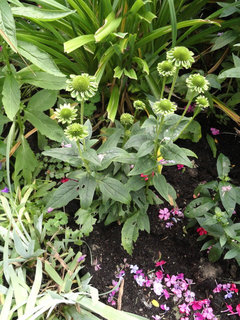

The reason for my failure to recognize coneflower rosette mite damage in Darrell's images is the absence of witches broom anomalies. Likely, however, these don't have to always be present to diagnose the presence of coneflower rosette mites.
My prized 'Hot Papaya', purchased in bloom in 2011, going down hill:
July 6, 2012
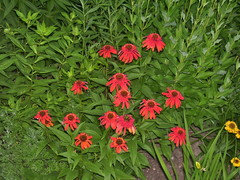
July 1, 2013
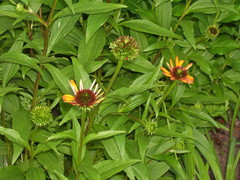
July 4, 2013
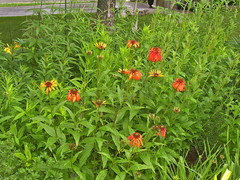
I removed the plants in Fall 2013.
Curious (as comments above); neither the 'Magnus' on one side of the 'Hot Papaya', nor the 'Sundown' on the other, have ever shown evidence of the mite.


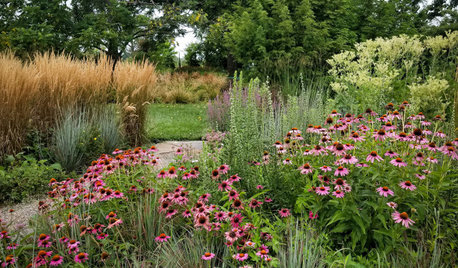


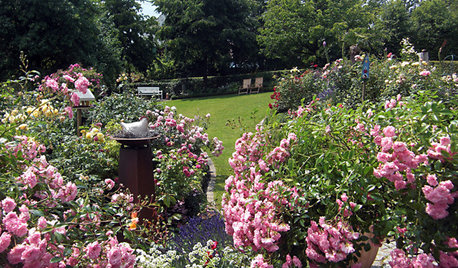
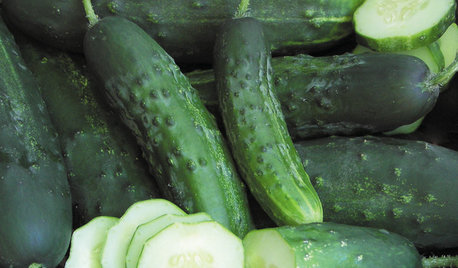

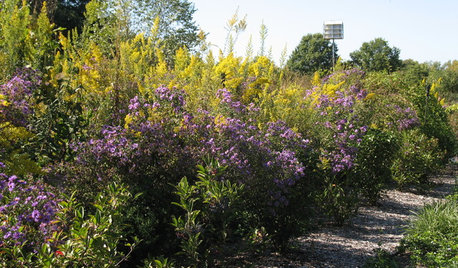







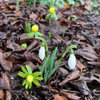

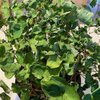
Darrell Nesmith (AR 7b/8a)